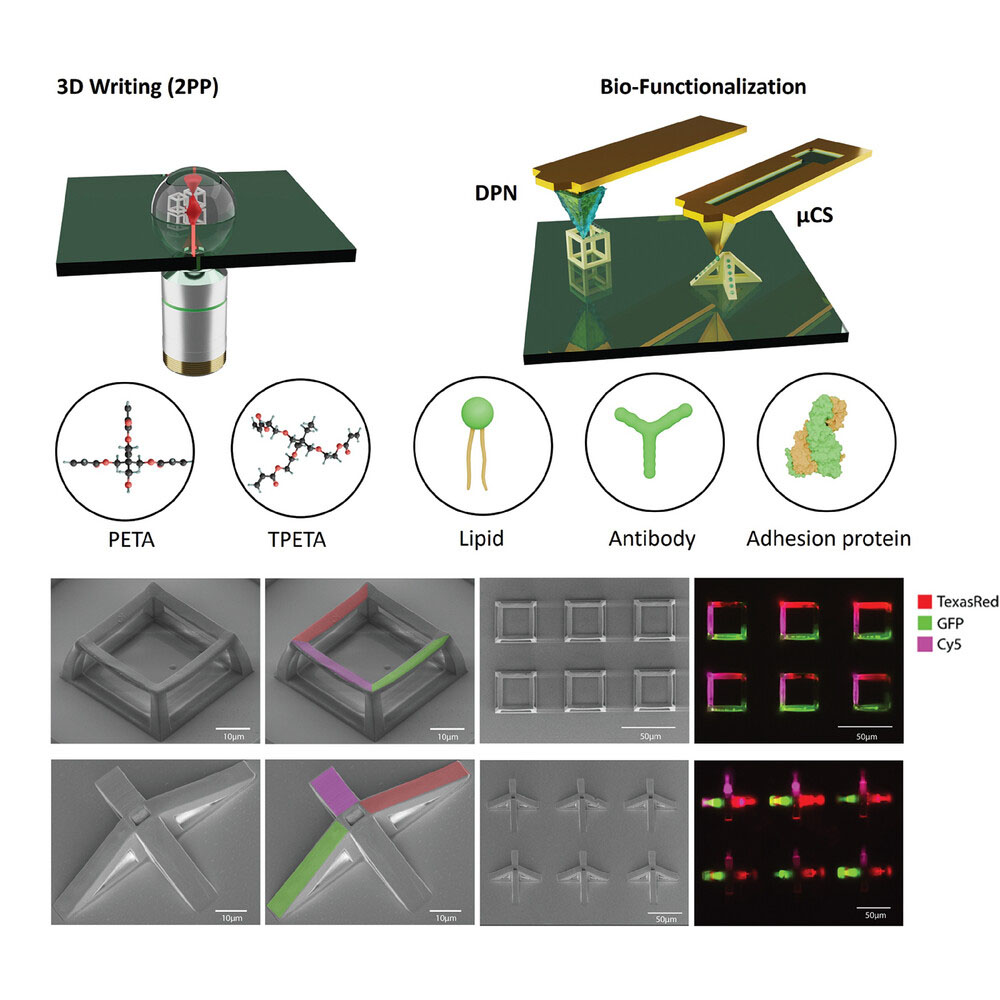
Site-Selective Biofunctionalization of 3D Microstructures Via Direct Ink Writing
-
Author:
G. Mathew, E. D. Lemma, D. Fontana, C. Zhong, A. Rainer, S. Sekula-Neuner, J. Aghassi-Hagmann, M. Hirtz, E. Berganza
-
Source:
Small 20 (2024) 2404429
- Date: 2024
-
Two-photon lithography has revolutionized multi-photon 3D laser printing, enabling precise fabrication of micro- and nanoscale structures. Despite many advancements, challenges still persist, particularly in biofunctionalization of 3D microstructures. This study introduces a novel approach combining two-photon lithography with scanning probe lithography for post-functionalization of 3D microstructures overcoming limitations in achieving spatially controlled biomolecule distribution. The method utilizes a diverse range of biomolecule inks, including phospholipids, and two different proteins, introducing high spatial resolution and distinct functionalization on separate areas of the same microstructure. The surfaces of 3D microstructures are treated using bovine serum albumin and/or 3-(Glycidyloxypropyl)trimethoxysilane (GPTMS) to enhance ink retention. The study further demonstrates different strategies to create binding sites for cells by integrating different biomolecules, showcasing the potential for customized 3D cell microenvironments. Specific cell adhesion onto functionalized 3D microscaffolds is demonstrated, which paves the way for diverse applications in tissue engineering, biointerfacing with electronic devices and biomimetic modeling.
